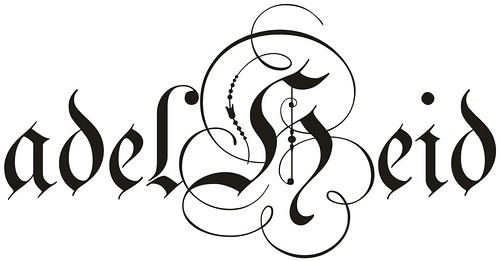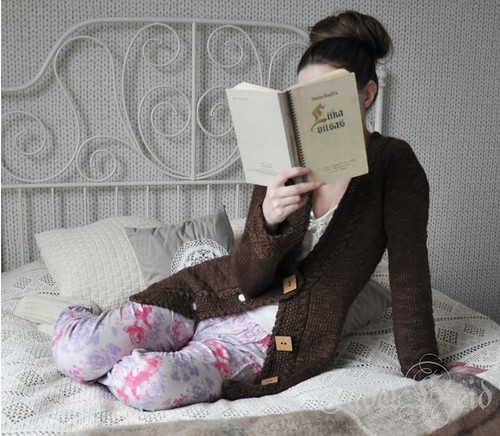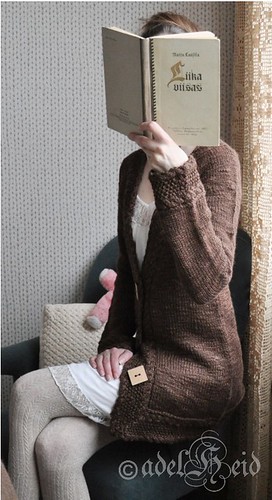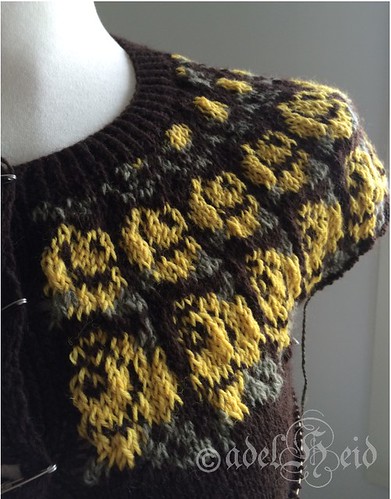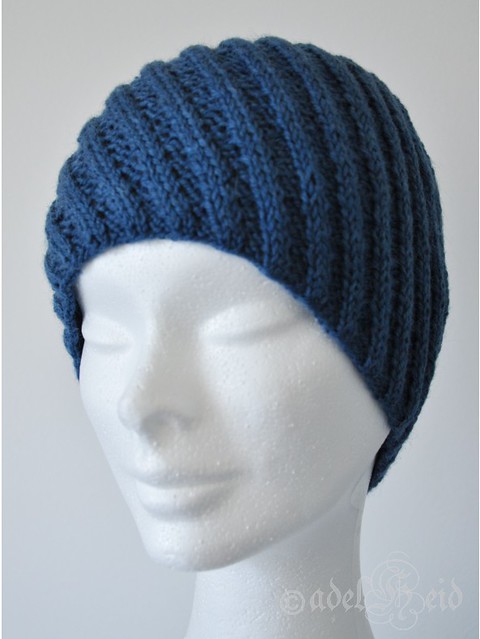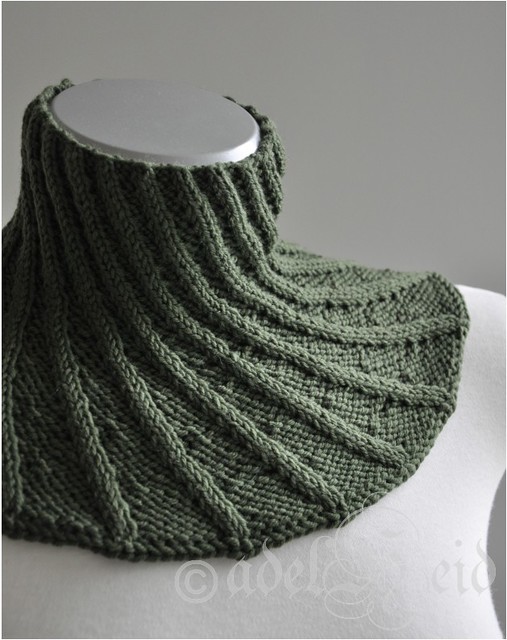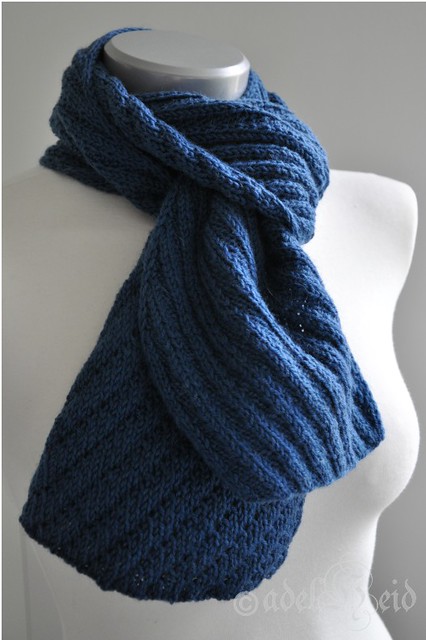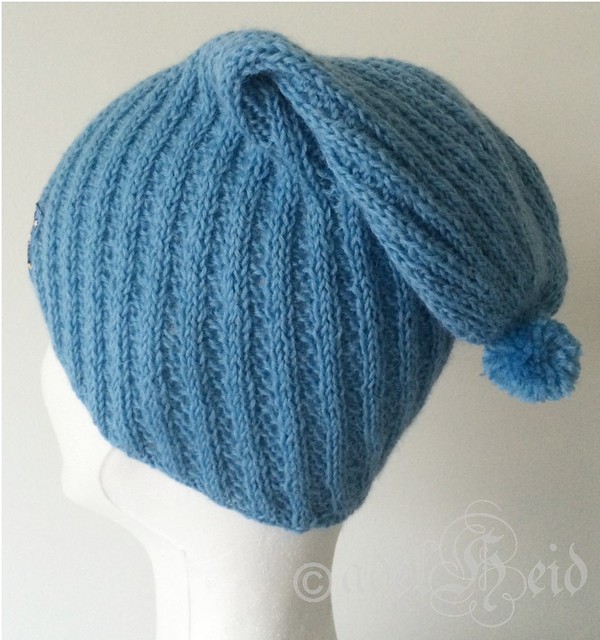Ehdinpäs
vielä tän kuun puolella julkaisemaan seuraavan ohjeen: muhkean neuletakin, joka
valmistuu nopeasti ”muhkulla” langalla ja suurilla puikoilla. Aamutuimaan kuvasin
vielä uudet, asteen verran selkeämmät kuvat neuleesta:
Muhkujakku
neulotaan täysin saumattomasti ylhäältä alas. Erittäin syvää v-pääntietä,
helmaa sekä kalvosimia kiertää palmikkoreunus, joka on näyttävyydestään huolimatta
yksinkertainen. Kiinnityksenä on kolme suurta nappia.
KOOT: XS – S –
M – L – XL – XXL – 3XL
VALMIIN TYÖN MITAT: Valmiin neuleen
vartalon ympärys n. 70 – 80
– 90 – 100 – 110 – 120 – 130 cm, hauiksen
ympärys 26 – 28 –
30 – 33 – 35 – 39 – 41 cmLANKA: aran paksuinen lanka, jonka juoksevuus on n. 150 - 180 m/100 g (wpi 8)
LANGAN KULUTUS: n. 800 – 900 – 1020 – 1155 – 1300 – 1470 – 1670 m
TIHEYS: 10 x 10 cm = 16 s ja 22 krs
VAIKEUSLUOKITUS: keskiverto
TEKNIIKAT: väliaikainen virkkausaloitus, lyhennetyt kerrokset, kaavio
PUIKOT: 4,5 mm pyöröpuikot, tai käsialan mukaan
OHJE OSTETTAVISSA RAVELRY KAUPASTANI! - 5 €  Mistä löytyy myös lisää yksityiskohtaisempia kuvia sekä tasokuva mittoineen.
Mistä löytyy myös lisää yksityiskohtaisempia kuvia sekä tasokuva mittoineen.
 Mistä löytyy myös lisää yksityiskohtaisempia kuvia sekä tasokuva mittoineen.
Mistä löytyy myös lisää yksityiskohtaisempia kuvia sekä tasokuva mittoineen.Muhku Cardigan
Muhku is a Finnish slang word to describe chunky,
bulky, voluminous… just what this cardigan is.
Especially in the winter it’s cozy to snuggle up in to
a big and chunky, warm cardigan. During spring and fall this cardigan can be
used instead of an over coat.
With big needles and thick yarn this cardigan is quickly done. It’s
worked top down without any seams. The details are simple, yet showy cables all
around the neckline and hem as well as the cuffs. The neckline is really deep
and the cardigan is closed with three big buttons.
SIZES:
XS – S – M – L – XL – XXL – 3XL
FINISHED MEASUREMENTS: bust circumference 70 – 80 – 90 – 100 – 110 – 120 – 130 cm (28 – 32 – 36 – 40 – 44 – 48 - 52”), bicep
circumference 26 – 28
– 30 – 33 – 35 – 39 – 41 cm (10.5 – 11 – 12 – 13 – 14 – 15.5 – 16”)YARN WEIGHT: aran (8 wpi)
MATERIALS: about 900 – 1020 – 1155 – 1300 – 1470 m (985 – 1115 – 1263 – 1422 – 1608 yd)
NEEDLES: 4.5 mm (US 7) or a size to obtain gauge
GAUGE: 10 x 10 cm = 16 sts and 22 rows
SKILL LEVEL: intermediate
TECHNIQUES: provisional cast on, short rows, cable chart
PATTERN
AVAILABLE IN MY RAVELRY STORE! - 5 €  Where you can also find more pictures of the details as well as a schematic.
Where you can also find more pictures of the details as well as a schematic.
 Where you can also find more pictures of the details as well as a schematic.
Where you can also find more pictures of the details as well as a schematic.